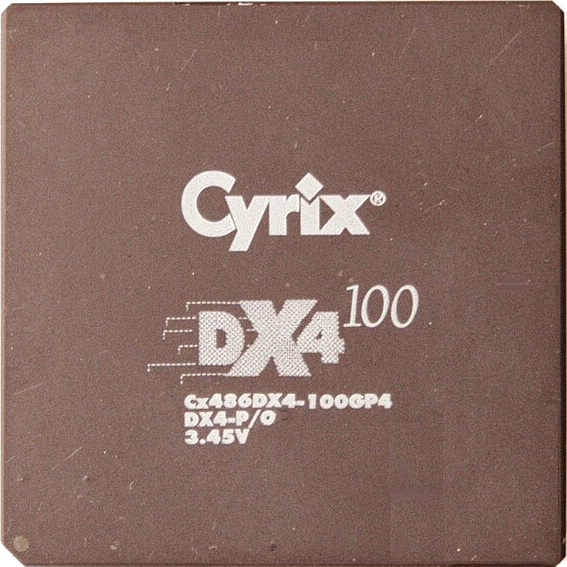Hello preppers! As I prepare further and further for the digital and traditional collapse of society (/s), I finally got to the point of building my selfhosted server.
At the moment I have a single bay Synology nas but it will soon find a new home (🗑️). I was thinking that instead of buying new tech I can be a conscious human being and recycle my old laptop.
My old MSI PE60 2QD with i7 5th Gen, its a very capable machine and having the battery, I think, is better for a sudden loss of power. I replaced it because the hinge and screen broke but I never thrown it away.
I wanted to wipe it and install some linux distro for selfhosting with, I think, Tailscale for access it remotely. I use it to store file, photos, music …normal cloud stuff.
Before wasting hours troubleshooting, I’m sure there are brilliant people here that can give me tips or a link to a simple guide to follow. (Please don’t make me ask the bots).
I’m sure this thread is already open somewhere and I’ll be happy to follow that and delete this, if so.
Thank you lemmings.
From what I gather, most people use a simple Linux distro like Ubuntu or Debian with a large community knowledge base. Then run the pieces you want through Docker. It’s pretty simple once you learn how.
Your laptop will be perfectly capable.
If you are going to store important data I would get a new drive. Either replace the internal or attach an external.
Also make backups.
I’m going to attach some used hard disks and ssds, I have many spare ones. I wanted to set up a RAID2 or 3, so even if some disks dies it’s not the end of the world.
RAID isn’t backup, or even redundancy, it’s for creating large storage pools. It’s at the mercy of the controller and all the hardware. In fact, the more disks you have, the more likely you are to be impacted by a failure.
In a typical RAID 5, if one drive fails, the entire array is at risk until the drive can be replaced, and resilvered. During resilvering (rebuilding the drive with all the data it should have, parity, etc), the entire array is at even more risk because of the load on the other disks.
With dual parity and hot spare (less data storage total), you get a little more security since the parity is doubled and the hot spare will be automatically resilvered if a drive fails, but that’s not without similar risks during that process.
Here’s a real-world example of RAID risks. I have a 5-drive NAS with 5 1TB drives, which gives me roughly 4TB of usable space (1TB parity). It runs software RAID using ZFS (a highly resilient file system, that can build arrays using varying disk sizes, and has some self-healing capability). I’ve had a drive go bad, replacing took 30 hours to rebuild. During that time, the entire array is “degraded”, meaning no parity protecting the data because it’s currently rebuilding the parity. If another drive were to have failed during this read/write intensive period, I would have lost ALL the data.
To protect against this, I have 2 other large drives which this data is replicated to. And then I use a cloud storage for backup (storj.io).
This is a modified version of the 3-2-1 method that works for my risk assessment.
Without offsite backup, you’re always at risk of local issues - fire, flood, etc. Or even just a massive power spike (though that’s not much of a risk, especially if you use a UPS).
I’m actually building a second NAS to have easier local redundancy, and because I have a bunch of drives sitting around. With TrueNAS or Unraid, it’s pretty easy to repurpose old hardware. Though power is always a concern, so I’m looking for an inexpensive motherboard that has low power draw at idle.
Thank you for the comment and explanation. I was hoping for comments like this from people much more knowledgeable than me on this. The dual NAS thing is really not a bad idea.
If you plan on running the laptop all the time on wall power, make sure to limit the battery charge to 80 % or less, otherwise the battery will die pretty quickly.
Or remove the battery if you can, to spare it from pillowing. I know it has the benefits of being a “psuedo-UPS”, but unless you also have your modem/router on a UPS, it’s pointless (internet goes out; you can’t access the laptop anyway).
At the beginning I can start with the laptop battery. Later I can remove it and use an external battery/power bank to keep it running. Once I set it up I feel I’ll have more time troubleshooting this too. Thanks.
Whatever you decide for your laptop, I’m a proponent of a barebones off-site setup if you’re trying for 3-2-1 backup or similar.
I use a raspberry pi 3 with a single HD (ZFS) retaining some number of daily/weekly/monthly snapshots. Daily rsync, everything over WireGuard+VPS (TailScale would work too).
using laptops as a forever-plugged-in device (regardless if workstation or server) isn’t the greatest idea. as an intermediary solution, like until you have something more permanent in place, sure. otherwise, look elsewhere.
limiting battery charge isn’t available on all laptop models and is aimed at preserving the battery’s functionality; it doesn’t solve the issue of a forever charged and never emptied battery. on the other hand, removing the battery on a lot of models limits their performance, significantly.
what is a viable solution is if you get a laptop board that runs at full power without battery, you can remove the board from the laptop, retrofit it with better cooling and additional storage (mini-PCI or M.2 to SATA adapters) and you end up with an energy-efficient server. but that requires a lot of work and is not something recommended for non-enthusiasts.
in short, sell it or swap it for something more adequate.




